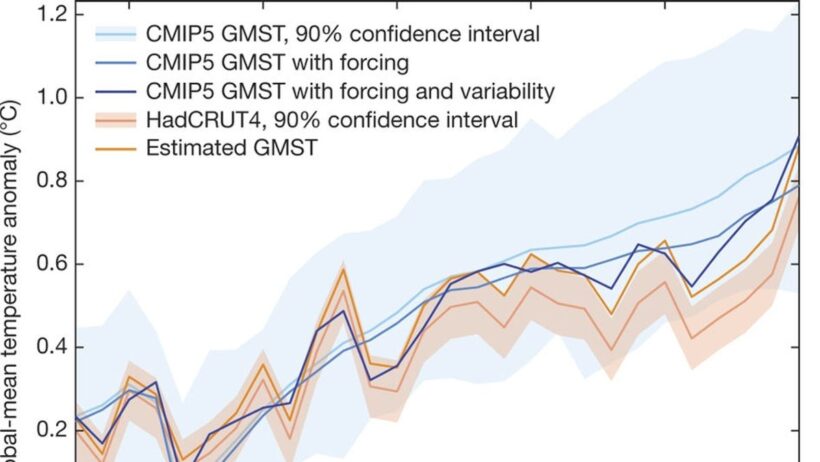Understanding the efficacy of global warming models is paramount in the current climate discourse. As climate change intensifies, the need for accurate forecasts becomes ever more critical. This article examines how close global warming models are to reality by evaluating climate predictions through various lenses, including the types of models utilized, their strengths and limitations, the uncertainties involved, evaluations from scientific communities, and the implications for policy-making and public perception.
1. Types of Climate Models
Climate models are computational tools that simulate the Earth’s climate system. They range from simple energy balance models to more complex general circulation models (GCMs). The latter are the most advanced and include numerous variables, such as atmospheric chemistry, land surface interactions, and ocean dynamics.
Energy balance models (EBMs) simplify the Earth’s energy intake and output, providing basic insights into how changes in greenhouse gas concentration could affect global temperatures. In contrast, GCMs offer detailed simulations that consider various physical processes and feedback mechanisms, making them essential for long-term climate projections.
Another category of climate models is regional climate models (RCMs), which focus on specific areas and provide localized data. These models are particularly useful for understanding the potential impacts of climate change on specific ecosystems, weather patterns, and communities.
2. Strengths of Climate Models
The primary strength of climate models lies in their ability to integrate vast amounts of data and compute complex interactions within the climate system. By doing so, they can produce a range of scenarios based on different greenhouse gas emission trajectories, allowing scientists and policymakers to envision best and worst-case scenarios.
Additionally, many climate models have successfully predicted long-term climate patterns. For instance, several models predicted the general trend of global warming since the late 20th century, validating their capacity to forecast climate changes over extended periods. Their capabilities have improved exponentially over the decades, thanks in part to advancements in computational power and the availability of comprehensive climate data.
3. Limitations and Uncertainties
Despite their sophistication, climate models embody inherent uncertainties. One significant limitation is the inability to perfectly replicate the Earth’s climate systems due to their complexity. Simplifications made within these models can lead to discrepancies between predictions and actual outcomes. For example, models often struggle to account for feedback loops—interactions that can amplify or mitigate climate change effects, such as the release of methane from thawing permafrost.
Moreover, models are inherently conditioned by the scenarios they use for greenhouse gas emissions. Different assumptions about industrial growth, technological advancements, and global policy implications can radically alter the predictions. As such, variations among models can lead to significant discrepancies in temperature estimates for the coming decades.
Another issue stems from a lack of accurate data, particularly in developing countries where monitoring networks are sparse. This deficiency can lead to underrepresentation of crucial regional effects, which in turn affects the accuracy of predictions on localized scales.
4. Evaluations from Scientific Communities
Climate scientists routinely peer-review climate models, ensuring that predictions undergo rigorous scrutiny. The Intergovernmental Panel on Climate Change (IPCC), for instance, provides comprehensive assessments of climate model outputs and their relevance to real-world conditions. Recent studies indicate that many models have overestimated warming rates over certain periods, signaling a need for ongoing refinement and enhancement of these computational tools.
Such evaluations also focus on model inter-comparison, where multiple models are assessed side by side. This approach aims to understand their variability and consensus, offering insights into potential biases and areas requiring improvement. Furthermore, a growing number of studies emphasize the importance of probabilistic projections, which provide ranges of potential outcomes rather than single estimates, thereby capturing uncertainty more effectively.
5. Implications for Policy-Making
Accurate climate models are vital for informing policy decisions regarding climate change mitigation and adaptation strategies. Policymakers rely on these predictions to set emission reduction targets and prepare for future climate impacts, such as sea-level rise and extreme weather events.
When models demonstrate significant warming, it prompts governments to pursue aggressive climate policies. Conversely, if a model suggests lower temperature rises, it may lead to complacency in climate action. This dynamic underscores the necessity for constant updates and transparency in model evaluations so that stakeholders can make informed decisions based on the most current data.
Moreover, the interplay between public perception and scientific modeling cannot be understated. Public trust in climate predictions affects the adoption of policies and the perceived urgency of climate action. Discrepancies or errors in models can diminish public confidence, highlighting the need for communication strategies that effectively convey uncertainties while emphasizing the overarching consensus on climate change’s seriousness.
6. Conclusion
The proximity of global warming models to reality is a multifaceted issue. While significant strides have been made in climate modeling, the complexity of Earth’s climate system ensures that uncertainty will persist. The interplay of different model types, their strengths and weaknesses, the committee evaluations, and the subsequent policy implications illustrate that climate predictions are a crucial element in our response to climate change. Ongoing refinement of these models, rigorous testing, and enhanced data collection will be critical in ensuring that we navigate the challenges posed by climate change with accuracy and foresight.






